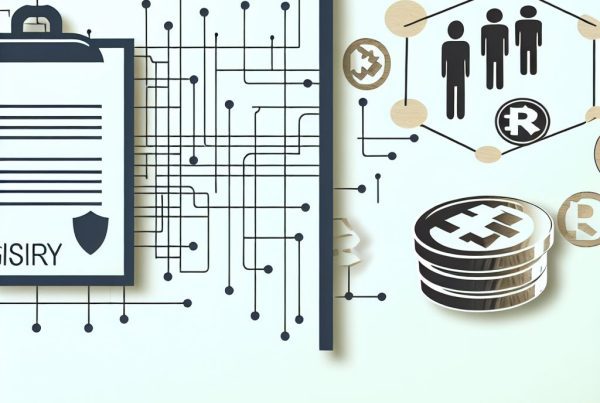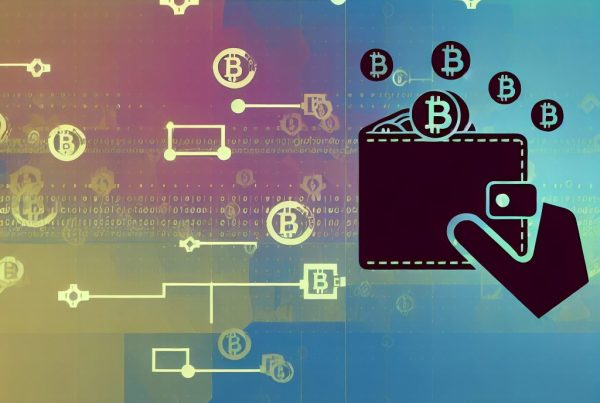How Crypto Transactions Are Verified
The verification of cryptocurrency transactions is a fundamental aspect of the blockchain technology that underpins digital currencies. Understanding how these transactions are verified is crucial for anyone involved in the cryptocurrency space, whether you are a seasoned investor or a newcomer. This article delves into the intricate processes involved in transaction verification, the technologies that facilitate it, and the implications for the future of finance.
Understanding Cryptocurrency Transactions
Before diving into the verification process, it’s essential to grasp what a cryptocurrency transaction entails. A cryptocurrency transaction occurs when one party sends a certain amount of digital currency to another party. This transaction is recorded on a blockchain, which is a decentralized ledger that maintains a secure and transparent record of all transactions.
Each transaction includes several key components:
- Sender’s Address: The public key of the individual sending the cryptocurrency.
- Receiver’s Address: The public key of the individual receiving the cryptocurrency.
- Amount: The quantity of cryptocurrency being transferred.
- Transaction Fee: A fee paid to miners or validators for processing the transaction.
- Signature: A cryptographic signature that verifies the authenticity of the transaction.
The Role of Blockchain Technology
Blockchain technology is the backbone of cryptocurrency transactions. It is a distributed ledger that records all transactions across a network of computers, ensuring that the data is immutable and transparent. Each block in the blockchain contains a list of transactions, a timestamp, and a reference to the previous block, creating a chain of blocks.
When a transaction is initiated, it is broadcasted to the network, where it awaits verification. This process involves several steps, which can vary depending on the consensus mechanism used by the blockchain.
Consensus Mechanisms: The Heart of Verification
Consensus mechanisms are protocols that consider a transaction as valid or invalid. They ensure that all participants in the network agree on the state of the blockchain. The two most common consensus mechanisms are:

Proof of Work (PoW)
Proof of Work is the original consensus mechanism used by Bitcoin and many other cryptocurrencies. In PoW, miners compete to solve complex mathematical problems. The first miner to solve the problem gets to add the new block of transactions to the blockchain and is rewarded with cryptocurrency.
This process involves:
- Transaction Pool: Transactions are collected in a pool, waiting to be verified.
- Mining: Miners use computational power to solve cryptographic puzzles.
- Block Creation: Once a puzzle is solved, the miner creates a new block and adds it to the blockchain.
- Verification: Other miners verify the solution before accepting the new block.
While PoW is secure, it is energy-intensive and can lead to slower transaction times.
Proof of Stake (PoS)
Proof of Stake is an alternative to PoW that has gained popularity due to its energy efficiency. In PoS, validators are chosen to create new blocks based on the number of coins they hold and are willing to “stake” as collateral.
The process includes:
- Staking: Validators lock up a certain amount of cryptocurrency as collateral.
- Block Creation: Validators are randomly selected to create new blocks based on their stake.
- Verification: Other validators confirm the legitimacy of the new block.
PoS is generally faster and consumes less energy than PoW, making it an attractive option for newer cryptocurrencies.
Transaction Verification Process
The transaction verification process can be broken down into several stages:
1. Transaction Creation
The process begins when a user initiates a transaction using a cryptocurrency wallet. The wallet generates a unique cryptographic signature using the sender’s private key, ensuring that only the sender can authorize the transaction.
2. Broadcasting the Transaction
Once created, the transaction is broadcasted to the network. Nodes in the network receive the transaction and add it to their local copy of the blockchain.
3. Validation by Nodes
Nodes validate the transaction by checking:
- If the sender has sufficient balance.
- If the transaction is properly signed.
- If the transaction adheres to the network’s rules.
4. Inclusion in a Block
After validation, the transaction is included in a block. In PoW systems, miners compete to solve the block’s cryptographic puzzle, while in PoS systems, validators are selected based on their stake.
5. Confirmation
Once a block is added to the blockchain, the transactions within it are considered confirmed. However, further confirmations may be required for higher security, especially in PoW systems where additional blocks must be added on top of the original block.
Real-World Applications of Transaction Verification
Transaction verification is not just a theoretical concept; it has practical applications across various industries. Here are some notable examples:
Supply Chain Management
Blockchain technology is being used to enhance transparency and traceability in supply chains. Companies like IBM and Walmart have implemented blockchain solutions to track products from origin to consumer, ensuring authenticity and reducing fraud.
Financial Services
Financial institutions are increasingly adopting blockchain for cross-border payments. Ripple, for instance, uses its XRP ledger to facilitate real-time international transactions, significantly reducing costs and processing times.
Healthcare
Blockchain can improve patient data management by providing a secure and immutable record of medical histories. This ensures that healthcare providers have access to accurate information while maintaining patient privacy.
Challenges in Transaction Verification
Despite its advantages, transaction verification in cryptocurrencies faces several challenges:
Scalability
As the number of users and transactions increases, blockchains can become congested, leading to slower transaction times and higher fees. Solutions like the Lightning Network for Bitcoin aim to address this issue by enabling off-chain transactions.
Security Risks
While blockchain technology is inherently secure, vulnerabilities can arise from poorly designed smart contracts or centralized exchanges. High-profile hacks have highlighted the need for robust security measures.
Regulatory Concerns
The regulatory landscape for cryptocurrencies is still evolving. Governments worldwide are grappling with how to regulate digital currencies, which can impact transaction verification processes and overall market stability.
Future of Transaction Verification
The future of transaction verification in the cryptocurrency industry looks promising, with ongoing innovations aimed at improving efficiency and security. Some trends to watch include:
- Layer 2 Solutions: Technologies like rollups and state channels are being developed to enhance scalability.
- Interoperability: Projects focused on enabling different blockchains to communicate with each other will facilitate smoother transactions across platforms.
- Decentralized Finance (DeFi): The rise of DeFi platforms is pushing for more efficient transaction verification methods, as they often involve complex interactions between multiple parties.
FAQs About Crypto Transaction Verification
What is a crypto transaction?
A crypto transaction is the transfer of cryptocurrency from one wallet to another, recorded on a blockchain.
How long does it take to verify a crypto transaction?
The time it takes to verify a transaction can vary based on the blockchain’s consensus mechanism and current network congestion. For example, Bitcoin transactions can take anywhere from 10 minutes to several hours.
What is a transaction fee?
A transaction fee is a small amount paid to miners or validators for processing and confirming a transaction. Fees can fluctuate based on network demand.
Can transactions be reversed?
No, once a transaction is confirmed on the blockchain, it cannot be reversed. This immutability is a key feature of blockchain technology.
What happens if a transaction is not verified?
If a transaction is not verified, it remains in the transaction pool and may eventually be dropped if not confirmed within a certain timeframe.
Conclusion
The verification of cryptocurrency transactions is a complex yet fascinating process that ensures the integrity and security of digital currencies. As the industry continues to evolve, understanding these mechanisms will be crucial for anyone looking to navigate the world of cryptocurrencies effectively. With advancements in technology and growing adoption across various sectors, the future of transaction verification holds great promise.
For the latest news and updates in the cryptocurrency space, consider visiting Bitrabo. You can also follow me on social media for more insights: X, Instagram, and Threads.
Disclaimer: This article is for informational purposes only and should not be considered financial advice. Always conduct your own research before making investment decisions.
The Crypto Watchlist of the Week 🔎
Subscribe to receive expert-curated projects with real potential—plus trends, risks, and insights that matter. Get handpicked crypto projects, deep analysis & market updates delivered to you.


